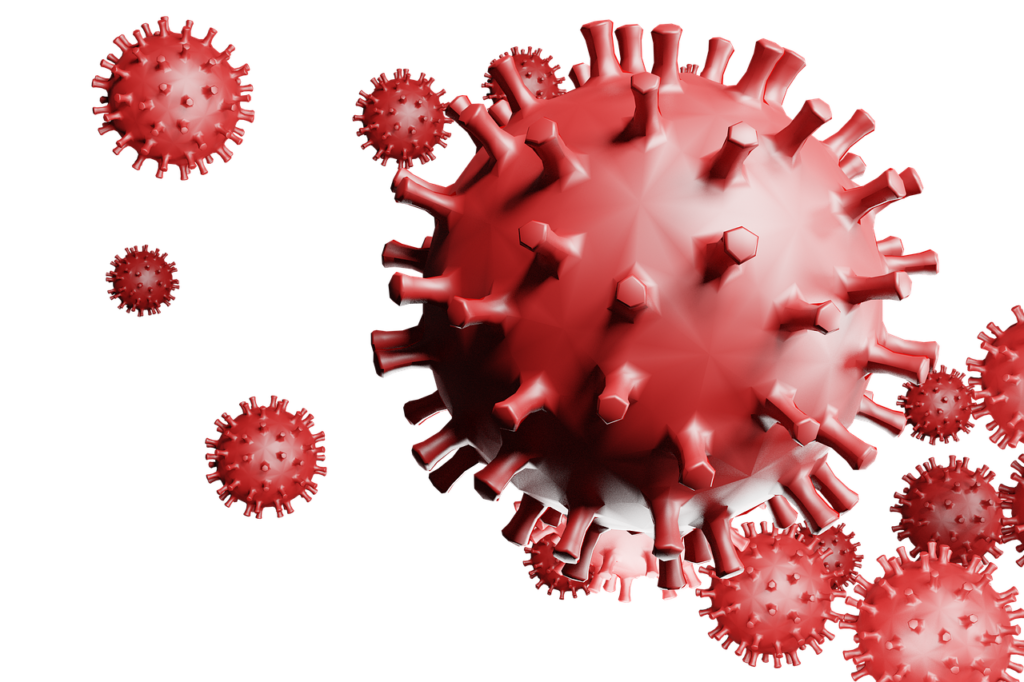It’s Baaack! Watch Out For COVID-19 This Fall

Photo: Pixabay.com
With testing and reporting infrastructure thoroughly dismantled around the country, it’s difficult to get an accurate picture of the state of COVID in any particular locale. Reporting on social media and anecdotal accounts around the Valley suggest that COVID is making a fall comeback. And a growing number of hospitalizations for COVID-19 diagnoses nationally has triggered concern among those who are attempting to track the disease. According to the Centers For Disease Control and Prevention (CDC) COVID-19 hospitalizations rose at the end of last month for the first time since the beginning of 2023.
CNN reports that there was a 14.3% increase in COVID-19 hospitalizations in the United States in the most recent week in which data were recorded. However, hospitalizations remain at a low level in more than 99% percent of the country.
There is also a new variant, Eris, also known as EG.5, that the CDC has labeled “highly transmissible.” According to recent CDC data, EG.5 — from the Omicron family — now makes up 17% of all cases in the U.S., up from 7.5% in the first week of July. So far, experts have found no difference in the severity of illness or symptoms between Eris and the strains that came before it.
CNN reports that another variant, BA.2.86, was labeled as a variant that both the CDC and the World Health Organization are “monitoring.”
COVID-19 In Massachusetts
In Massachusetts, the state reported that 342 patients were hospitalized last week with COVID-19. The seven-day positivity was 11.39 percent. 2171 new cases and 12 new deaths were reported for the prior week on August 31 according to the Boston Globe. This shows a slow but steady uptick in new cases from the State’s all- time low in May of 2023.
Amherst no longer reports COVID data but continues to monitor community wastewater for the COVID-19 virus. Wastewater surveillance captures presence of SARS-CoV-2 shed by people with and without symptoms. By measuring SARS-CoV-2 levels in untreated wastewater over time, public health officials can determine if infections are increasing or decreasing in a sewershed. A snapshot of the most recent graph for Amherst (August 25, 2023) shows considerably lower concentrations than were measured last summer but the last actual report archived (along with interpretive text) dates to February 2023.
A Challenging Fall?
CNN reports that as health professionals look ahead to the fall with the emergence of new variants, the guidance from the CDC has remained the same. “Recommendations include stay up to date with vaccines, get tested if infection is suspected, stay home with any suspected or confirmed infections, seek medical attention when necessary, and follow the advice of health professionals.” The reporting also notes that this fall will be especially challenging with a “triple threat” of pan-respiratory viruses encompassing COVID-19, flu, and RSV. Reporting in the Washington Post notes that the intensity of exposure to the virus matters, and vaccines and prior infections can only help so much — but they do indeed help.
A Return to Masking?
Some institutions are already reacting to the rise in COVID. Morris Brown College in Atlanta announced a return to mandated physical distancing and masks just one week after classes started in August. The CDC recommends universal masking in jurisdictions that have 20 or more people with COVID per 100,000 in local hospitals and masking for high-risk individuals when 10 to 19.9 people per 100,000 are hospitalized from the virus. A perusal of reporting on the COVID-19 uptick suggests that overall, the public has little appetite for a return to masking – mandated or otherwise
When To Get A Booster
A new COVID-19 booster designed to better protect against many of the commonly circulating strains will be out in a month or so, and most people can wait for that new shot to jumpstart their immunity. But people over age 65, people who are immunocompromised or haven’t had COVID recently, or, who haven’t had another dose of the bivalent booster, should get it now.
The new booster coming this fall will target a family of Omicron subvariants called XBB and is expected to provide good protection against even newer versions.
When Should I Test for COVID?
CDC recommends that If you have symptoms that you test immediately. If you use an antigen test, a positive result is reliable, but a negative test is not always accurate. If your antigen test is negative, take another antigen test after 48 hours or take a PCR test as soon as you can. The most commonly reported symptoms appear to be similar to an upper respiratory infection, such as a sore throat, cough, congestion, and runny nose. More information here.
What To Do If You Test Positive
If you tested positive for COVID-19 or have symptoms, regardless of vaccination status, the CDC recommends that you stay home and isolate for five days.
- Stay home unless you need medical care. Don’t go to work or school and avoid public places like stores.
- Isolate from others. …
- Wear a mask. …
- Wash your hands. …
- Inform your close contacts.
Information on COVID testing in Massachusetts can be found here
Information on COVID vaccines in Massachusetts can be found here.
